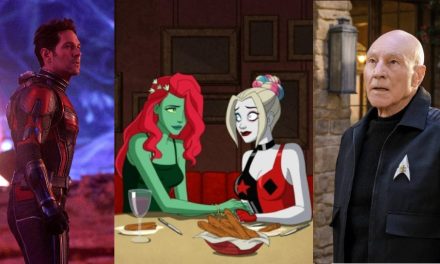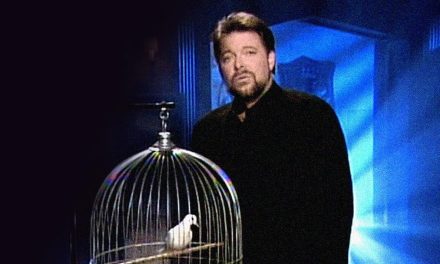“Are you a Jedi?” The innocent question posed by Din Djarin in the season 2 finale of Star Wars: The Mandalorian is one that fans watching knew well. Very well. Standing before Djarin, Grogu and others was Luke Skywalker, Star Wars original trilogy hero, the character epitome of The Hero’s Journey and icon to so many children in the 1970s, 1980s and beyond.
To the shock of many, The Mandalorian creator Jon Favreau & Co. brought Skywalker back in the global phenomenon of a show. And Skywalker’s return was relatively well-received.
So how did they pull it off?
On Wednesday, Disney released a documentary on Disney+ about that, Disney Gallery: Star Wars: The Mandalorian – Making of Season 2 Finale. Here are 40 points that the film made.

1. Peyton Reed, director of the season 2 finale (The Rescue), said that after he was told that Skywalker would appear at the end of the episode, he needed a moment.
2. Richard Bluff, a visual effects supervisor for Industrial Light & Magic, said that even after the scene with Skywalker was shot, staff still used code names to refer to him.
3. Dave Filoni, executive director on The Mandalorian, said if it would be OK for someone to take Grogu from Djarin, it must be Skywalker.
4. Reed said there was a matter of “finding that balance” of how much Skywalker would be in the episode.

5. Filoni said that Skywalker’s hood coming off his head is the key shot to revealing the character because you don’t believe he is actually in the show until that moment.
6. Bluff said the effects team relied not just deep fakes, but also de-aging, for Skywalker’s face.
Mark Hamill On Coming Back As Luke Skywalker
7. Mark Hamill, actor of Skywalker, said “If they want me to do this, how can I say no?” He thought that if Disney were to tell stories of Skywalker after the events of Star Wars: Episode VI – Return of the Jedi, a younger person would play the character. Then he was told the character would be de-aged, as is seen in Marvel Cinematic Universe films.

8. Favreau: “Even when you get used to making this stuff, there are moments that are so surreal.”
9. Reed said he and Favreau took the script of the episode to Hamill’s house.
Getting Technological
10. Favreau said he looked at all possibilities of how to digitally change Skywalker’s face, including the technology used for Grand Moff Tarkin in Rogue One: A Star Wars Story and General Leia Organa in Star Wars: The Rise of Skywalker.

11. Favreau said he went with a technology that takes existing images of someone (for Skywalker, that included off-screen activity by Hamill, like interviews) and then when an actor acts, the technology lines up the expression with what is in the library of images available.
Locked Away
12. Bluff said Favreau had Landis Fields, virtual production visualization supervisor on The Mandalorian, locked away in an office for secrecy, “kicking the tires” on deep fakes.
13. Fields said in that office, he was “having to pull very specific source footage.”

14. Reed knows Lola Visual Effects through Ant-Man, which Reed directed. Through Lola, Reed found Max Lloyd-Jones. He could play Skywalker since he has a similar body as Skywalker’s in Return of the Jedi, the point on the Star Wars timeline that the episode’s production team wanted to emulate for Skywalker, Reed said.
15. Hamill said that he and Lloyd-Jones watched each other’s acting and tried to mimic each other (since they were playing the same character in the same scene).
Magic
16. Fields, the virtual production visualization supervisor, said that what was more magical than the technology was seeing Hamill teaching someone to be his younger self.
17. Bluff thinks that everyone involved in the production of the episode was deep down having fan moments, he said.

18. Bluff said that Disney had the smallest possible production team there when Skywalker makes his entrance “to keep this secret.”
19. Production team members were Googling The Mandalorian to see what was out there about the show to make sure Skywalker’s appearance didn’t leak, Bluff said.
20. Favreau said that everyone knew about Boba Fett and Ahsoka Tano being in the show, even though the production team as a whole didn’t publicly say anything about their presence. With leaks about those characters, though, Favreau said he wanted “to get the ship back to the harbor before the whole thing is done.”

Plo Koon “Was” Luke Skywalker
21. Reed said they kept Skywalker’s appearance secret by having “misleads in the scripts” to artwork that wasn’t Luke” to “some temporary visual effects that were the character of Plo Koon.”
22. Filoni said they claimed Koon when it was Skywalker because then fans would think Filoni is bringing Koon into the show because Filoni likes the character. Even a digital Koon head was put over Skywalker’s in an image of Skywalker in the scene.
23. Reed said it was hard to keep Grogu a secret, and the filmmakers had to do that for only one episode since Grogu is in the first episode of the show’s first season. But with Skywalker, they had to keep him secret for an entire season.
24. In editing, six of seven people had tears in their face when they watched Skywalker appear, Bluff said. Then, he realized that he was responsible for changing Skywalker’s face, Bluff said.
Seeing A Different Luke Skywalker
25. As a fan, Reed wanted to see Skywalker as a peak Jedi, Reed said.
26. Hamill always wondered about post-Return of the Jedi, pre-Jedi Academy Skywalker, Hamill said. (The Jedi Academy is a place in Disney’s Legends canon where Skywalker trains the next generation of Jedi.)
27. Skywalker didn’t have advanced fighting ability because he hadn’t got much training, Filoni said. The production team sought to reflect that. However, Filoni wanted to have Skywalker fight better than he did in Return of the Jedi.

28. Skywalker looks different in various shots of the original trilogy, Bluff said, speaking on the effects team’s practice of using images of Hamill/Skywalker to digitally create a face for Skywalker.
29. The only time you hear John Williams music in “The Mandalorian” is in the scene, Favreau said. And it’s a testament to Williams as to how effective the music is, Favreau said.
Ethics & Technology
30. Favreau has thought about the ethics of deep fakes, he said.
31. Favreau talked about using the technology while minimizing the downside.
32. Favreau said Skywalker’s voice was “completely synthesized using an application called Respeecher.”
R2-D2’s Significance
33. Filoni told Favreau that if you have Skywalker, you have R2-D2 with him, Filoni said. Favreau loved that – R2-D2 was Favreau’s favorite Star Wars character as a child, Favreau said. Filoni witnessed Favreau be as excited as a young person who first saw Star Wars with the filmmakers incorporating R2-D2, Filoni said.

34. Filming the scene was “already intense” because Hamill/Skywalker was there and the filmmakers were on set in a starship hallway, Favreau said. “It felt like a dream,” he said. “It was very strange.” Favreau broke down when R2-D2 came in the area, he said, noting “what it touches from your childhood.”
35. “Deja vu with Yoda” was how Hamill described encountering Grogu. Hamill worked with another puppet in Yoda for Star Wars: Episode V – The Empire Strikes Back and Return of the Jedi.
36. Bluff choked up at the scene. That’s very much because now the world knows about it, he said.
A Hallmark Moment
37. Favreau said that making the scene was one of his top five moments for him in filmmaking. (His directing credits include Elf, two Iron Man films, The Jungle Book and The Lion King,)

Positive Feelings
38. Hamill said that Favreau sent him videos of people reacting to the scene. Hamill noted that it made “grown men cry.”
39. Filoni: “Fundamentally, Star Wars should deliver a good feeling, an uplifting feeling.”
40. In Star Wars, creator George Lucas made something that leaves “room for all the archetypes of every age,” Favreau said.
What are your thoughts about the documentary? Comment below! And click here for more Star Wars news and commentary from That Hashtag Show.




